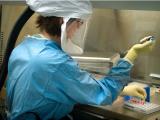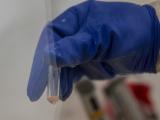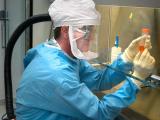Jun 10, 2004 (CIDRAP News) The US Postal Service (USPS) has begun installing anthrax-detection systems in major mail-processing centers and hopes to have the equipment in 100 facilities by the end of this year.
After testing the Biohazard Detection System (BDS) for nearly 2 years in Baltimore, the USPS began installing the system in major processing and distribution centers in March, said Bob Anderson, a USPS spokesman in Washington, DC.
"Equipment has been installed and I believe it's up and running in six of those facilities," Anderson told CIDRAP News. "I believe the equipment is arriving at the seventh tomorrow."
He said plans call for installing the system in about 100 facilities by the end of November of this year and completing the project with another 183 installations in 2005. Northrop-Grumman, primary contractor for the project, is doing this year's work under a $175 million contract, he said. The amount for next year's work has not yet been determined.
The USPS decided to add the equipment after the anthrax-by-mail attacks in the fall of 2001. The attacks killed five people, including two postal workers, and caused 17 other cases of illness.
The installation begun in March was suspended Apr 28 for testing to find out why some systems were yielding "inconclusive" results, the USPS reported. The project resumed Jun 4 after the problems were identified and corrected, the agency said in a news release.
The inconclusive results "meant that a small, but unacceptable, number of tests had to be rerun to obtain conclusive results," Azeezaly S. Jaffer, USPS vice president for public affairs, said in the news release. "Had anthrax been present, it would have been detected by the BDS. BDS has proven that it consistently and reliably detects anthrax in the mail."
The detection system includes an air-collection hood over machines that handle "raw" mail collected from mailboxes, Anderson said. Air samples are drawn to a cabinet where they are tested automatically for anthrax. The system can be expanded to test for other pathogens, but currently it only tests for anthrax, he said.
Besides testing the system initially in Baltimore, the Postal Service ran one-month tests of the equipment at 14 facilities last summer, Anderson said. The equipment was removed from those plants after the tests.
He said installation of the system is moving generally from east to west, with Pittsburgh and Cleveland among the first cities to get the equipment.
USPS officials are meeting with local and state health officials in each city before the equipment is installed, Anderson said. "We have to meet with those officials and first responders and work out an emergency response plan in case we do detect anthrax in the mail," he said.
He said no evidence of anthrax has been detected by any of the systems so far.
See also:
USPS news releases (click on Jun 4 release, "Biohazard Detection System Deployment Resumes")
http://www.usps.com/communications/news/press/welcome.htm




















